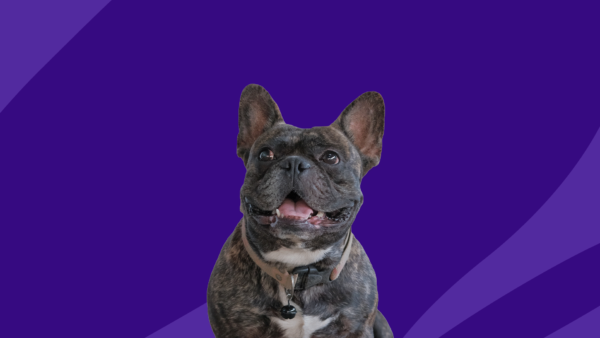Though we often think of dogs as leading happy, carefree lives, some feel distressed to the point of causing self-harm, property damage, or bad behavior. We want our pets to be happy and healthy, so we need ways to teach them to feel safe and secure.
Many pet parents medicate their animals with antidepressants or anti-anxiety medications to help the entire household run more harmoniously. There are many types of mood medications on the market originally created for humans that veterinarians use for helping pets moderate their moods. Amitriptyline is often used to treat depression or anxiety in humans, but many vets use it for dogs’ behavior management and mood stabilization as well.
RELATED: What’s important to know about treating dogs with anxiety
What is amitriptyline used for in dogs?
When used in humans, amitriptyline is often used to treat anxiety. People find it helps them relieve overall tension or sleep better. Some brand names of amitriptyline are Elavil and Amitid. It is a tricyclic antidepressant (TCA) used when selective serotonin reuptake inhibitor (SSRI) antidepressants such as Zoloft (sertraline) or Prozac (fluoxetine) are not an option. Many people cannot take SSRIs due to other health conditions or medication interactions.
Canines find relief from amitriptyline as well. Amitriptyline can help dogs with:
- Generalized anxiety
- Separation anxiety
- Obsessive-compulsive behaviors, such as overgrooming
Dogs may exhibit anxiety differently than humans, with destructive behavior, restlessness, irritation, vocalizing, pacing, or even aggression. If your dog is taking that stress out on themselves or your couch, some relief in the form of medication could be in order.
Amitriptyline dosage for dogs
Amitriptyline comes in various strength dosages in tablet form for humans. It can be compounded into different formulations, including a liquid for small dogs or dogs who have a hard time taking pills.
“The dose of amitriptyline will depend on the size of your dog and the condition you’re trying to treat,” says Chyrle Bonk, DVM, a veterinarian at Senior Tail Waggers, but general guidance is about 0.5 to 1 mg per pound once or twice daily. You should speak to your veterinarian to determine the proper dosage and never give your own prescription to your pet.
You may have to adjust the dose over time as you figure out what works best for your pet.
Once your dog takes their medication, it starts to work in as little as 30 minutes. However, for long-term use and for addressing behavior over time, Dr. Bonk says, “amitriptyline reaches full effect at around seven to 10 days at the proper dose.” Veterinarians find it a useful and effective drug for managing anxiety over time.
Amitriptyline side effects in dogs
Amitriptyline has several side effects, most of which are not serious. Its desired effect is calmness, but some dogs are more sedated than others, so you will have to judge if you are seeing a correct effect of the drug or a side effect that warrants an adjustment.
Some side effects of amitriptyline include:
- Sedation
- Dry mouth
- Urine retention
- Constipation
- Arrhythmia
- Vomiting
- Diarrhea
- Lack of appetite
- Incoordination
- Hyperexcitability
Sara Ochoa, DVM, a veterinarian at Senior Tail Waggers says the most common side effect is constipation. If you are concerned about your dog’s behavior after they take amitriptyline, or if their side effects seem severe or are not improving, contact your veterinarian or emergency vet for guidance. While urine retention and constipation are not too troublesome once in a while, they can develop into serious health conditions, such as urinary tract infections, if they continue over time. Occasional lack of appetite, vomiting, or diarrhea isn’t too much of a problem, but if your pet becomes underweight or dehydrated, you may need to adjust. Not all medications are right for all pets, and your pet may need a different dosage or a different medication.
The medication stays in a dog’s system for 12 to 24 hours, but Dr. Bonk says, “This amount of time can vary based on other medications they are on or other health conditions they have.” Your dog should not be having side effects after that time. If they are, seek medical attention.
Is amitriptyline safe for dogs?
Generally, amitriptyline is considered a safe medication for dogs. If your dog has been taking amitriptyline for a while, “it is best to taper this medication and not stop abruptly unless directed to do so by your vet,” says Dr. Ochoa. Your vet will give you instructions on how exactly to reduce the dose to avoid withdrawal symptoms.
Always follow the guidance of your vet about the dosage for amitriptyline. If you are prescribed it or any medication, do not give your drug to your pet to help them with their anxiety. Dogs and humans metabolize drugs very differently and require different dosages based on weight. “In high dosages, this medication can have toxic side effects such as seizures,” says Dr. Ochoa. Seizures can be fatal to a dog.
There are several medications that can interact with amitriptyline, including others intended for mood stabilization or regulation. Dogs with certain health conditions who may take other medications or be prone to other health conditions should be given amitriptyline with extreme caution. In particular, dogs who have seizures, thyroid or liver disease, urinary retention, eye issues, heart conditions, diabetes, or adrenal gland conditions should be especially careful. Always give your veterinarian your pet’s full health history and medication list, including any vitamins or supplements they may be taking.











